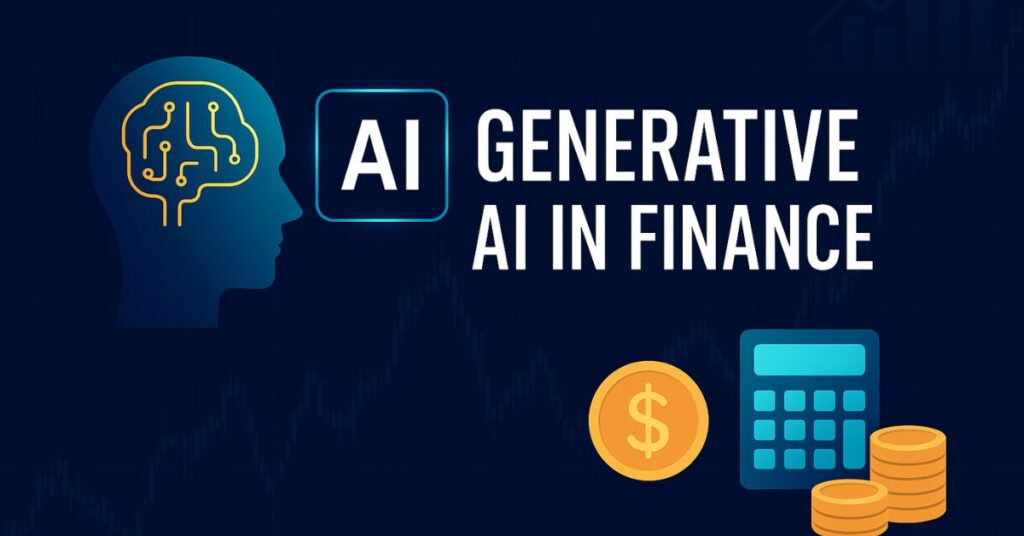
Generative AI in Finance: Transforming the Future of Financial Services
Introduction
In the digital age, Generative AI in Finance is more than a buzzword—it’s a game-changer. From automating financial reports to delivering personalized investment advice, this technology is reshaping how institutions operate and how individuals interact with money. Whether you’re a fintech founder, a financial analyst, or simply curious about the future of finance, this post will guide you through the rise of generative AI and its real-world impact.
What Is Generative AI in Finance?
Generative AI refers to artificial intelligence systems that create new content, insights, or solutions by learning from existing data. In finance, this means AI can:
- Draft financial reports and investment summaries
- Simulate market scenarios and economic models
- Generate personalized financial plans
- Detect anomalies and potential fraud patterns
Unlike traditional AI, which focuses on prediction and classification, generative AI actively creates new outputs—making it a powerful tool for innovation and efficiency.

Key Applications of Generative AI in Finance
📝 Automated Financial Reporting
Generative AI tools can summarize earnings calls, draft investor presentations, and create regulatory filings—saving time and reducing human error. For example, JPMorgan Chase uses natural language generation (NLG) to automate parts of its reporting process.
💼 Personalized Financial Advisory
Robo-advisors powered by generative AI offer dynamic investment strategies tailored to spending habits, risk tolerance, and life goals. Wealthfront and Betterment are leading the charge with AI-driven financial planning.
🔐 Fraud Detection and Risk Management
By analyzing millions of transactions in real time, generative AI identifies suspicious patterns and predicts potential breaches before they occur. It also generates synthetic fraud scenarios to train detection systems.
🤝 Customer Service Enhancement
AI-powered chatbots now answer complex financial queries, guide users through loan applications, and resolve disputes with near-human empathy. Morgan Stanley uses OpenAI-powered bots to support advisors with internal research.
📊 Portfolio Optimization
Generative AI simulates thousands of market conditions to recommend asset allocations and forecast returns—empowering smarter investment decisions. This helps investors stay agile in volatile markets.
📄 Financial Document Synthesis
Banks spend significant time searching and summarizing internal documents. Generative AI can instantly extract insights from contracts, memos, and filings, boosting productivity and client engagement.
Benefits of Generative AI in Finance
Implementing Generative AI in Finance offers:
- Efficiency: Automates repetitive tasks
- Accuracy: Reduces errors in reporting and forecasting
- Scalability: Handles vast datasets effortlessly
- Personalization: Delivers customized services at scale
- Innovation: Enables the creation of new financial products
- Cost Savings: Reduces operational expenses and boosts ROI
According to MIT Technology Review, generative AI could save the financial industry up to $340 billion annually.
Challenges and Ethical Considerations
Despite its promise, generative AI poses challenges:
- Bias in Algorithms: Historical data may reflect systemic biases
- Data Privacy: Handling sensitive financial information requires robust safeguards
- Regulatory Compliance: Adhering to evolving laws is critical
- Job Displacement: Automation may impact traditional finance roles
To mitigate these risks, institutions must prioritize transparency, accountability, and ethical AI development.
The Future of Generative AI in Finance
Looking ahead, Generative AI in Finance is expected to:
- Drive hyper-personalized banking experiences
- Enable real-time financial forecasting
- Support inclusive finance for underserved populations
- Foster collaborative ecosystems between humans and machines
Finance leaders are already investing in private, fine-tuned AI deployments to reduce risk and unlock secure value.
Real-World Case Studies
- Morgan Stanley: Uses generative AI to assist financial advisors with internal research and client support
- JPMorgan Chase: Automates financial reporting with NLG tools
- AlphaSense: Employs AI to generate market intelligence reports for investors
- TallierLT AI: Enhances fraud detection and compliance monitoring
These examples show how generative AI is not just theoretical—it’s actively transforming operations across the financial sector.
Conclusion
Generative AI in Finance is not just a technological upgrade—it’s a paradigm shift. By automating processes, enhancing personalization, and unlocking new possibilities, it empowers institutions and individuals to navigate the financial landscape with greater agility and insight.
Whether you’re building a fintech startup, managing a portfolio, or planning your financial future, embracing generative AI could be your smartest investment yet.
Disclaimer
This article relies on internal data, publicly available information, and other reliable sources. It may also include the authors’ personal views. However, it’s essential to note that the information is for general, educational, and awareness purposes only—it doesn’t disclose every material fact. This analysis is for informational purposes only and does not constitute financial advice. Consult a professional before making investment decisions.
We publish information on World Virtual CFO in good faith, solely for general information. World Virtual CFO doesn’t guarantee the completeness, reliability, or accuracy of this information. These are our views for informational purposes. When you use our website, know that any action you take is entirely at your own risk. World Virtual CFO won’t be liable for any losses or damages connected to your use of our website. For detailed information, refer to our disclaimer page.
Dr. Dinesh Sharma is an award-winning CFO and AI strategist with over two decades of experience in financial leadership, digital transformation, and business optimization. As the founder of multiple niche platforms—including WorldVirtualCFO.com—he empowers professionals and organizations with strategic insights, system structuring, and innovative tools for sustainable growth. His blogs and e-books blend precision with vision, making complex financial and technological concepts accessible and actionable.